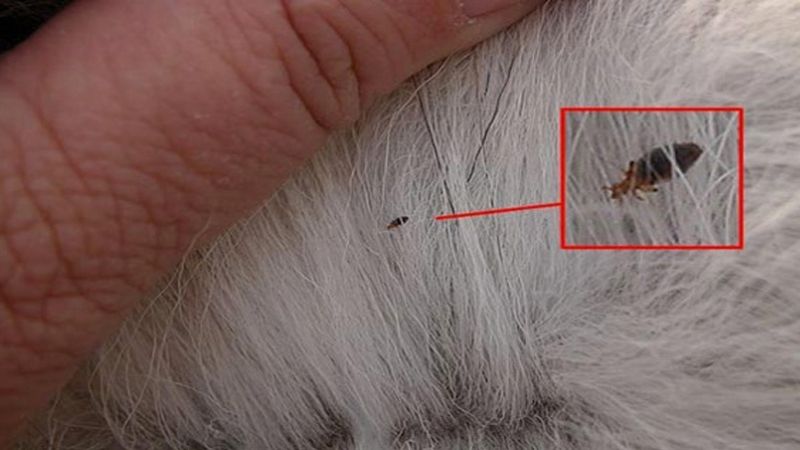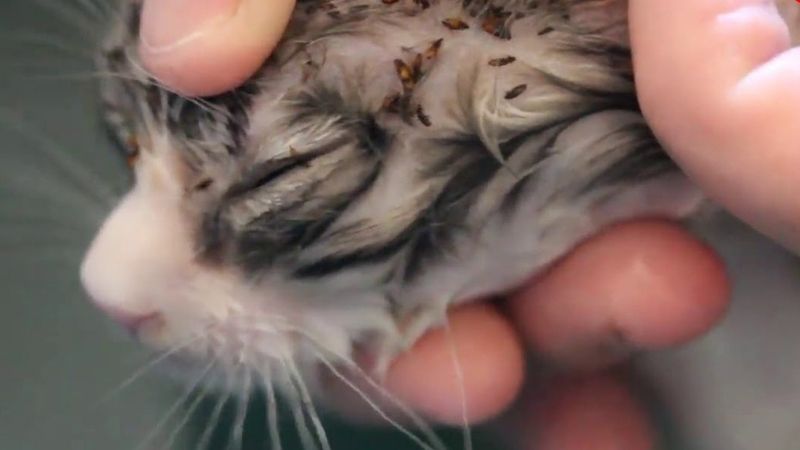1. What are Cat Fleas?

Cat fleas (Ctenocephalides felis) are blood-sucking parasites that specifically target cats. They are the most common type of flea and are found worldwide. These tiny pests can quickly multiply and infest your cat, leading to discomfort and potential health issues.
Life Cycle of Fleas: Fleas go through a complete life cycle on the host animal. They feed, reproduce, and lay eggs on the host’s skin. The eggs then fall off into the environment, hatching into larvae that feed on organic matter and the blood-rich feces of adult fleas. The larvae eventually form pupae, from which adult fleas emerge to find a host and continue the cycle.
Transformation of Larvae into Adults: The larval stage of fleas goes through four distinct stages before entering the pupal stage. The transformation into adult fleas is rapid, and they require stimulation from a host to break free from their cocoons. Once they emerge, they immediately attach themselves to the host and begin feeding within minutes.
2. Signs of Fleas on Your Cat
 Signs of Fleas on Your Cat
Signs of Fleas on Your Cat
Keep an eye out for these telltale signs that your cat may have fleas:
- Red, irritated skin or scratches on your cat’s body.
- Finding flea dirt (digested blood) when grooming or bathing your cat.
- Spotting the parasites crawling on your cat’s skin and fur.
- Increased scratching and grooming behavior due to the irritating presence of fleas.
3. Prevention and Treatment of Fleas in Cats

Wash Your Cat’s Bedding and Regularly Used Items: Wash your cat’s bedding, blankets, and any other fabric items they come into contact with regularly. Use hot water to kill any fleas or eggs that may be present.
Use Flea Treatment Products: There are various effective flea treatment options available, including topical solutions, shampoos, and sprays. Consult your veterinarian for recommendations specific to your cat’s needs.
Flea Shampoos for Cats: When bathing your cat, use a flea shampoo specifically designed for felines. Follow the instructions on the product, ensuring you lather the shampoo thoroughly and leave it on for the recommended duration before rinsing.
Flea Dips for Cats: Flea dips are concentrated solutions that are applied directly to your cat’s coat without rinsing. Follow the instructions carefully, as incorrect use can be harmful. Always supervise your cat after a flea dip to ensure they don’t ingest the solution while grooming.
Flea Sprays for the Environment: Use flea sprays specifically designed for the environment to treat your cat’s bedding, furniture, and other areas they frequent. Follow the instructions on the product, and ensure proper ventilation during and after application.
Topical Flea Treatments for Cats: Consult your veterinarian for recommendations on safe and effective topical flea treatments for your cat. These are typically applied directly to the skin, usually between the shoulder blades, and offer long-lasting protection.
By following these guidelines, you’ll be well-equipped to keep your furry friend happy, healthy, and flea-free. Good luck!

































